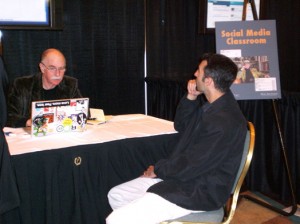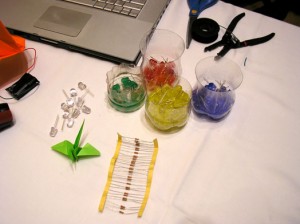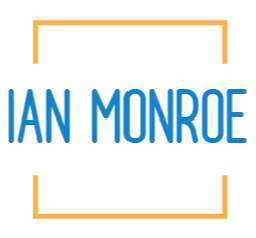
Whether it’s mapping an ancient Roman burial route over time, constructing a homemade flashlight or learning how to make art from recycled materials, HASTAC and the MacArthur Foundation are helping fund the digital media experiments that could provide innovative learning opportunities for youngsters.
In an effort to bring education up to speed with the digital era, the John D. and Catherine T. MacArthur Foundation along with HASTAC, a consortium of humanities, arts and science professionals, awarded $2 million dollars in grants in the second annual Digital Media and Learning Competition on Thursday.
Howard Rheingold, futurist and author of the book “Smart Mobs: The Next Social Revolution“ was a winner in last year’s competition, and served as a judge for this year’s applicants. “The educational model that is 1,000 years old, that is based on handwritten books that are chained down to lecterns that some old guy stands up and reads to you, is severely challenged when all the students in the room are online and you’re competing with the rest of the internet,” Rheingold said.
“Young people are changing as a result of digital media,” said Julia Stasch, the vice president of human and community development at the MacArthur Foundation, “This has huge implications for teaching and learning.”
To celebrate the announcement of the winners of this year’s grants, HASTAC brought together 17 of last year’s winners to demonstrate what kinds of projects the grant money helped produce, develop and expand. The event kicked off with a reception and performance by PLOrk, the Princeton Laptop Orchestra at the Newberry Library and concluded with an expo Friday afternoon at the Palmer House.
“[PLOrk] was one of the winners last year,” said Cathy Davidson, professor of interdisciplinary studies at John Hope Franklin Humanities Institute and co-founder of HASTAC. “And they’re not only a performing orchestra. When they teach students, they’re teaching students everything from computer music to atonal music to signal processing.”
Both creativity and user-involvement are key factors in determining winners for the competition. The winners of this year’s grants will display the results of their projects at next year’s reception.
“We were looking for things that were not one-off’s, that can replicate and influence,” Rheingold said. “We’re looking at projects that have some degree of ingenuity regarding the technology and particularly projects that are centered on participatory learning.”
Some of this year’s grant recipients included: DigitalOcean, which will connect 200 classrooms worldwide to help observe and monitor declining fish populations; PlayPower, which will use an inexpensive ($12) TV-computer for interactive design of learning games; and Global Challenge, an online competition using media and social networking tools to develop and propose solutions to problems such as global warming and the future of energy.
The emphasis on interactive learning was evident in last year’s winning projects on display at Friday’s expo.

Hypercities, scheduled to publicly launch this summer, allows users to take real maps of cities and overlay both geographical and time-based information. A HyperCity can include everything from its architectural history to the stories of residents past and present.
This has uses in both general education and for high-end research, according to Diane Favro, director of the UCLA Experiential Technologies Center.
“You can go through time and see the different maps and add your own content,” she said. “So you could add somebody’s trip through the city, or where riots had occurred in a particular historical time, or other events, and link that with music or pictures or, as we did with the Rome one, with 3-d models, so it just depends on what your goal is. It’s going to be open for everyone to use, and serve as a platform where everything gets geo-temporally tagged.”
Some of the projects, like Ohmwork, brought students in to help develop the projects. Ohmwork is a social networking site centered on do-it-yourself science and technology projects.
“About 70 kids helped develop the prototype, start and run the project,” said Corbett Beder, director of high school programs at Vision Education and Media. “We let them run wild with it.”
The site, directed primarily towards middle-school-aged kids, offers podcasts about experiments kids can try on their own, as well as the ability to comment on and contribute to the experiments of others.
The grants awarded in last year’s competition were also used to expand projects already in place. The Global Fund for Children created a hub for information and story exchange between grassroots organizations and vulnerable children.
“The grant allowed us to buy flip cameras to send to our partners,” said Monica Grover, a digital media projects manager for the fund. “It helped build this hub and post training in digital storytelling, so these people can share their stories, get their voices heard and help empower them.”
These stories can inspire additional learning, Grover said. People in India can learn from people in Honduras about how to cope in a food crisis, for example.
The MacArthur Foundation’s Stasch was confident the digital media competition would continue to produce innovative opportunities for learning.
“We’re looking around the corner at the best ideas of tomorrow,” she said.
[flashvideo file=”flash_video/PLORK_slideshow.flv” /]
An audio slideshow illustrating the concert by the Princeton Laptop Orchestra (PLOrk) on Thursday. The performance was to celebrate the winners of the Digital Media and Learning Competition. PLOrk was a winner in last year’s contest.
Note: Kathryn Murphy and I co-wrote this piece. It was first published on the Medill News Service website on 4/21/2009, and is republished here for my own archives.

